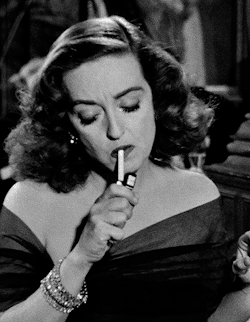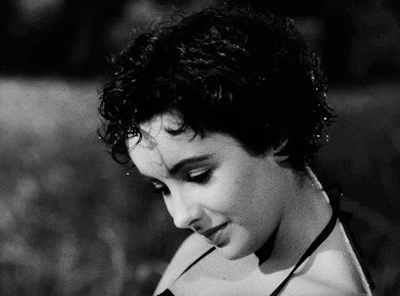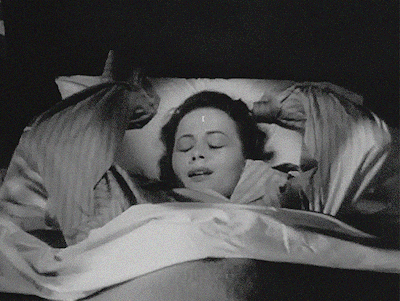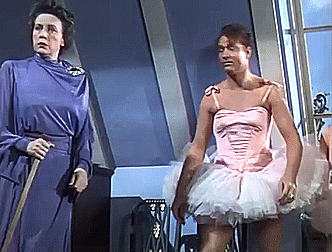Who's a Character?
Typecasting is nothing new in Hollywood, and in the July 1951 issue of Photoplay, legendary columnist Sheilah Graham broke down who among the brightest stars were—and weren’t—very much like the famous characters they portrayed.
“I’ve watched them all—the tough guys, the ingenues, the waspish women, the heroes and the heels,” Graham wrote.
For starters: “I know a
couple of Bette [Davis]’s previous husbands quite well and they tell me Bette
and Margo [Channing, from All About Eve] are one—the same,
unpredictable type of person, complete with the flinging around of mink coats
and staccato excitability. Plus the genuine warmth and intelligence and sense
of humor that Margo had. Margo, Bette—it’s all the same, and if you liked
Margo, you’ll love Bette. Gary Merrill did and does, both ways.”
Graham said that people
theorized that the change in Jane Wyman after her Oscar-winning performance
in Johnny Belinda might have led to the breakdown of her
marriage to Ronald Reagan.
“But I personally believe that
some of the divorce can be blamed on Ronald’s talkativeness, which can be very
boring. However, Jane was a sick, depressed girl both during and after this
picture.”
As far as Graham was concerned,
John Wayne was the same person on screen and off—that’s how nice and genuine he
appeared.
The movie sirens, she
wrote, “remind me of the comedians, most of whom are sad sacks away
from the camera.” This included Ava Gardner, Hedy Lamarr and Lana
Turner, and “[t]hese delectable dames rarely wear make-up or dress up
off duty.”
Lana, she wrote, might be the
happiest of the trio because she had the husband and the home life (at the
time, anyways). Hedy “is prepared to travel to the four corners of the
world to get hers,” and “Ava is hoping that somehow,
somewhere, she can be Mrs. Sinatra.”
Elizabeth Taylor, she wrote, felt
nothing like the society girls she played in films. Instead, Elizabeth was
down-to-earth and loved animals and nature, though Graham thought this was
still patterned on the way society girls lived their lives.
She ended her summation of
Elizabeth with this prescient wish: “I hope film fame will ultimately bring
Elizabeth happiness. To date, it has only brought confusion for her family and
for her.”
The oddest actor in Hollywood,
Graham wrote, who didn’t match their on-screen persona, was Jane Russell—who
needs no explainer on the types of roles she garnered over her illustrious
career:
“The sexy extrovert on celluloid
is a deeply religious, modest girl at home, with a chapel in her own backyard.
The posters can show Jane struggling for her honor in low-cut gowns till
kingdom come. Away from the camera the only thing Jane struggles for is to
remember a passage from the Bible, most of which she knows by heart.”
June Allyson, meanwhile, knew
how to lean into the sweetheart persona she’d cultivated, but Graham wrote that
she didn’t allow herself to dwell on it because “success here didn’t come
right off the bat for her,” instead waiting two years for a hit (Two
Girls and a Sailor).
On a personal note, having read
June’s autobiography last summer, she’s much steelier than she is America’s sweetheart—to
say nothing about her obsession with Dick Powell.
Another screen sweetheart,
Jeanne Crain, Graham wrote, fit perfectly into the roles perfect for someone
with the “wistful air of a little girl” that once gave Janet Gaynor her
fame. “She is wistful and feet-off-the-groundish.”
Olivia de Havilland, Graham
wrote, was once a “carefree, happy girl” before she took on Warner Bros.
and now “she tries so hard with every acting job. I’m wondering if there isn’t
such a thing as trying too hard. I hope that her next movie assignment will be
a little romantic part. Then maybe Olivia will return to her early lighter,
gayer self.”
And all those early film
gangsters—the Jimmy Cagneys, the George Rafts, the Richard Widmarks—“are
exceptionally quiet men in real life.”
Except for Bogie, Graham wrote. “[His
public and private life] was just as noisy before Warners elevated him to
stardom and he used to complain about his bosses just as much then as he does
now. Only now, at $200,000 a picture, he doesn’t have any reason to.”
None of the heartthrobs had great
love stories at home. Graham does a run down of Errol Flynn, Robert Taylor and Clark
Gable, and mentions how Betsy Drake has finally tamed Cary Grant—though we all
know how that story ends…
The comedians, she wrote, aren’t
all sad sacks. Notably Red Skelton and Bob Hope, who are always joking around,
she wrote, and never “at the expense of any living creature.”
She had Jerry Lewis pegged right,
writing that sometimes he turned into the straight-faced businessman away from
the camera and needed to approve everything related to the successful pairing
of Martin and Lewis.
In closing, Graham wrote: “The
contradictions are there, too . . . the sirens, the gag-men, the lover-boys,
they’re all double personalities. But that’s like the old ‘which comes first,
the chicken or the egg?’ routine.”





Comments
Post a Comment